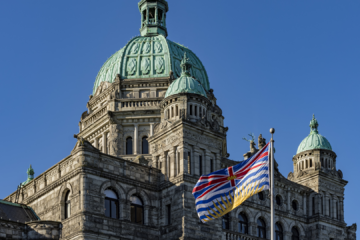BC Supreme Court upholds limited common property designation in the face of a claim of significant unfairness
October 25, 2016
BY Kevin Zakreski
Chen v The Owners, Strata Plan VR1856, 2016 BCSC 1946, involved a dispute over a deck in a two-unit strata property located on the Vancouver waterfront. The strata property was developed in 1987 and early in its life its owner-developer “passed a special resolution designating certain areas of the common property as limited common property.” One of the areas affected by this resolution was a large wooden deck with “a spectacular view of English Bay and the North Shore mountains.” Under the resolution, the deck “was designated as limited common property with the deck in front of each strata lot being designated for the use of that lot.” The resolution was duly registered in the land title office.
Despite all this, the resolution was ignored or forgotten by subsequent strata-lot owners. By the time the petitioner and the respondent in this case had taken ownership of their strata lots in the 1990s, the deck was treated as common property. The owners developed a practice of “consulting with one another over when and how the Deck was to be used both generally and on occasions when one owner had an event in which they planned to use the Deck.”
By 2005 “the wooden structure of the Deck was deteriorating.” The owners “ultimately agreed to replace it with a concrete structure, the cost of which was in excess of $400,000.”
In 2014 the respondent’s strata lot “suffered water damage as a result of a burst pipe in the wall of the upstairs bathroom.” The respondent sought access to the damage through the petitioner’s strata lot. The petitioner refused to grant access.
While this dispute over access was ongoing, the respondent “obtained a survey plan of the property which set out the measurements and boundaries of the limited common property of each of SL 1 and 2. She learned the Deck immediately in front of SL 2 was limited common property.” On the basis of this survey plan, the respondent “placed flower pots along SL 2’s portion of the Deck,” marking out the boundary of the limited common property.
The petitioner objected to this action. She requested “a special general meeting be held to vote on a resolution that would remove the limited common property designation over the Deck.” The meeting was held, but the respondent refused to support the proposed resolution. The petitioner commenced this proceeding, seeking the following relief under section 164 of the Strata Property Act:
- an order that the limited common property designation “be removed such that the “Deck” area of Strata Lots 1 and 2 be designated as the common property of both lots”;
- an order that the respondent “remove all items that would constitute a barrier or partition of the Deck and be enjoined form erecting or placing any items that would constitute a barrier or partition of the Deck or prevent the full use and enjoyment of the Deck by both parties.”
The court briefly reviewed a number of the leading cases on section 164. Then it succinctly characterized the issue and its conclusion in this case as follows:
The issue for determination is whether the strata corporation’s decision to vote against the resolution proposed by Ms. Chen is significantly unfair. In my view the decision was not significantly unfair to Ms. Chen.
This conclusion rested on “several reasons,” one of which was the status of the registered designation:
my analysis must commence with the legal status of the property at the time both the petitioner and respondent acquired their respective strata lots. At that time of both purchases, the Deck was registered in the Land Titles Office against the strata lot as limited common property. The fact that the resolution was passed on May 14, 1987, was registered in the Land Titles Office on May 20, 1987 and was there to be seen by anyone searching the title to the property is not disputed.
The court was also concerned about the effect of the requested orders on the respondent’s rights:
To allow for this application on the basis of “significant unfairness” would disenfranchise the respondent from the exercise of her statutory right to vote and would override her rights under the SPA.
Finally, the court wasn’t prepared to give legal backing to the owners’ longstanding practice of treating the deck as common property:
In my view, the common use of the Deck by Ms. Meekison and Ms. Chen and the owners of SLs 1 and 2 before them arose, not from any legal entitlement which would give rise to the result Ms. Chen seeks on this application, but rather from the desire amongst owners to be good neighbours and share the bountiful amenity that the full use of the Deck provided.
In the result, the court dismissed the application with costs to the respondent.











































